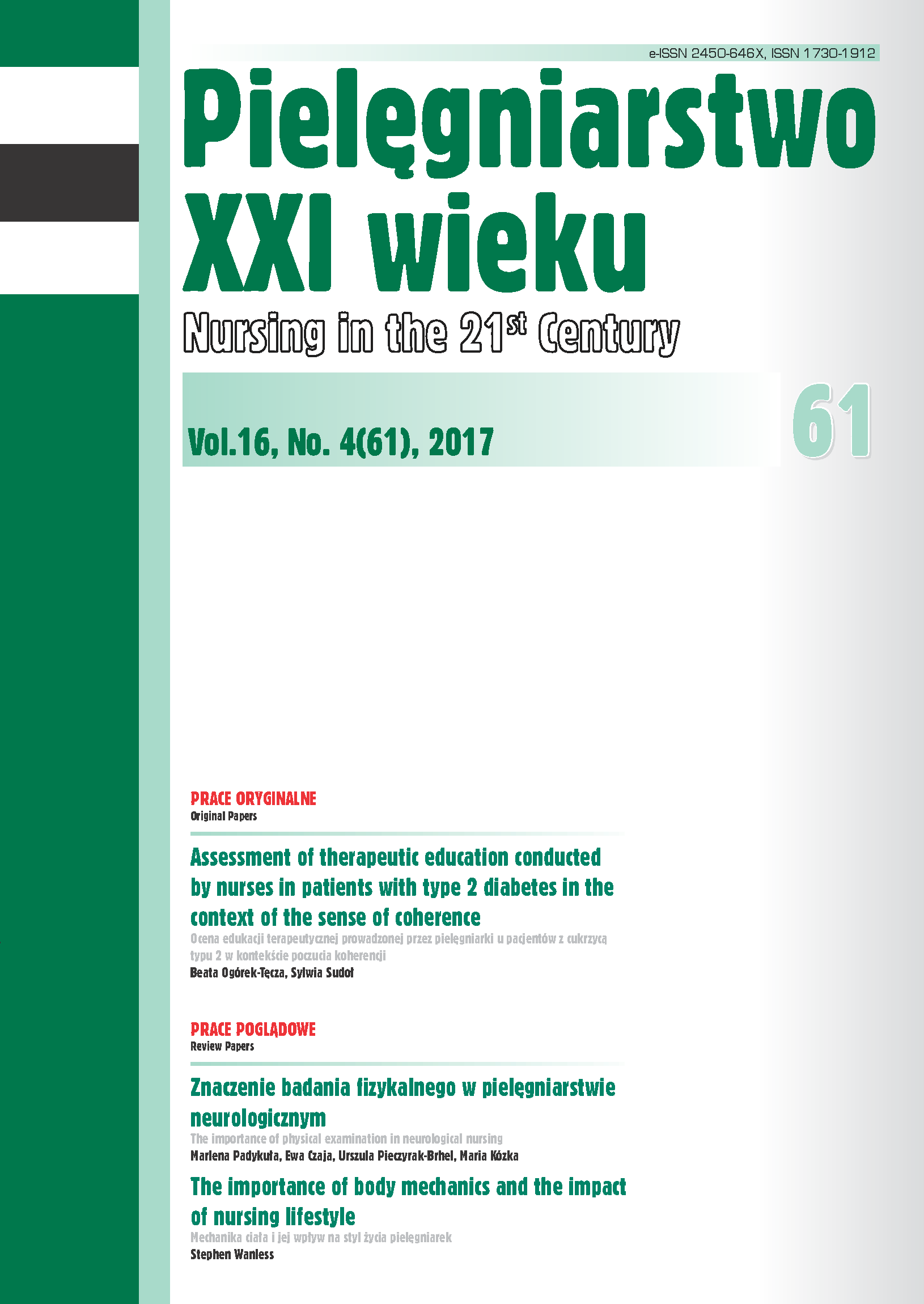Quality of life of women with postmenopausal pelvic organ prolapse
DOI:
https://doi.org/10.1515/pielxxiw-2017-0031Keywords:
pelvic organ prolapse, menopause, quality of lifeAbstract
QUALITY OF LIFE OF WOMEN WITH POSTMENOPAUSAL PELVIC ORGAN PROLAPSE
Aim. The aim of the study was to evaluate the quality of life of women with pelvic organ prolapse during the postmenopausal period.
Material and methodology. The study group consisted of 45 patients of the Department of Gynecology and Oncology at the University Hospital in Cracow The study was conducted as a diagnostic survey using the following survey techniques: author’s questionnaire and the Short Form of Health Status Questionnaire (SF-36v2).
Results. The results showed that the respondents rated their quality of life as lower than the norm set by the authors of the SF-36v2 questionnaire. A statistically significant (p<0.05) correlation between the age of the subjects and the quality of life was found.
Conclusions. The quality of life of the women with the pelvic organ prolapse was low. The reason of the subjective assessment of quality of life was age. The most common symptom associated with pelvic organ prolapse was feeling the urge to urinate.
References
1. Bump RC, Norton PA. Epidemiology and natural history of pelvic floor dysfunction. Obstet Gynecol Clin North Am. 1998;25 (4): 723-746.
2. Persu C, Chapple CR, Cauni V, et al. Pelvic Organ Prolapse Quantification System (POP-Q) – a new era in pelvic prolapse staging. J Med Life. 2011; 4: 75-81.
3. Polskie Towarzystwo Uroginekologiczne: Skala POP-Q obniżenia narządów miednicy mniejszej 2014. Cytowany dn. 13.11.2017. Adres: http://ptug.pl/wp-content/uploads /2014/09/POP-Q_Reference_Ethicon.pdf.
4. Polskie Towarzystwo Uroginekologiczne: Interdyscyplinarne wytyczne Polskiego Towarzystwa Uroginekologiczne odnośnie diagnostyki i leczenie obniżenia narządów miednicy mniejszej. 2014 Cytowany dn. 13.11.2017. Adres: http://ptug.pl/algorytmy-postepowania/intersdyscyplinarne-wytyczne-polskiego-towarzystwa-uroginekologicznego-odnosnie-diagnostyki-i-leczenia-obnizenia-narzadow-miednicy-mniejszej.
5. Lewicka M, Sulima M, Pyć, M, i wsp. Ocena ryzyka zaburzeń statyki narządu rodnego wśród kobiet. Medycyna Ogólna i Nauki o Zdrowiu. 2012; 4(18): 398-401.
6. Rørtveit G, Hannestad YS. Association between mode of delivery and pelvic floor dysfunction. Tidsskr Nor Laegeforen. 2014;14; 19 (134): 1848-1852.
7. Lee UJ, Kerkhof MH, van Leijsen SA, Heesakkers JP. Obesity and pelvic organ prolapse. Curr Opin Urol. 2017; 5 (27): 428-434.
8. Rodríguez-Mias NL, Martínez-Franco E, Aguado J et al. Pelvic organ prolapse and stress urinary incontinence, do they share the same risk factors? Eur J Obstet Gynecol Reprod Biol. 2015;190: 52-57.
9. Połocka-Molińska M, Jakóbczak B, Plagens-Rotman K. Wpływ nietrzymania moczu na jakość życia kobiet. Pol Prz Nauk Zdr. 2017;2 (51): 161-167.
10. Chan SS, Cheung RY, Yiu KW et al. Symptoms, quality of life, and factors affecting women’s treatment decisions regarding pelvic organ prolapse. Int Urogynecol J. 2012; 8 (23): 1027-1033.
Published
Issue
Section
License
Copyright (c) 2017 Authors

This work is licensed under a Creative Commons Attribution-NonCommercial-NoDerivatives 3.0 Unported License.




